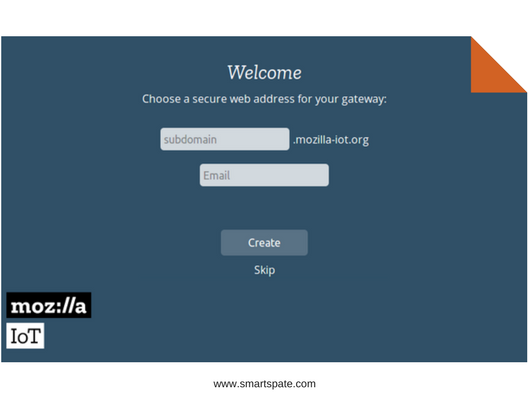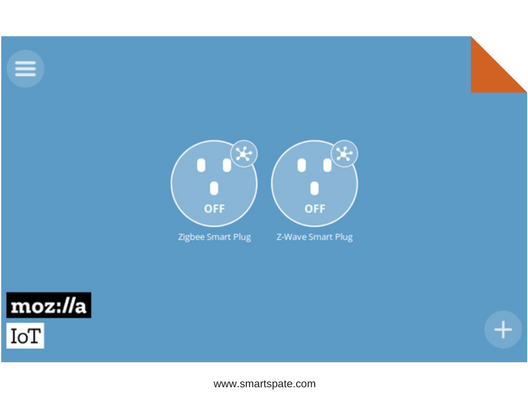Mozilla Has Developed An Open Internet Of Things Framework
Apple, Google, Amazon, Samsung – each of these companies have their own standards and programs for managing smart devices of their own brand. As a result, they often can only communicate with their “relatives” of the same brand.
Apple’s Smart HomePod column will refuse to back up data to the Amazon cloud or Google and will not execute commands from the Android smartphone. It turns out that for full integration all the equipment in the house should be from one company. This is clearly an abnormal situation.
Last year, Mozilla announced that it is working to create a single free framework – programs and services for the Internet of things working on the open standard Web Things API, which uses JSON, REST and the WebSockets API.
- The framework should become a single gateway for the interaction of “smart” devices from different manufacturers (Things Gateway).
Now the organization officially announced the launch of the Mozilla IoT project, laid out a stack of programs and published a guide to building a smart home system using Raspberry Pi. The application for the standardization of the Web Things API was submitted to the W3C consortium on February 2, 2018.
In the table below show the protocols and services, which are used by manufacturers of Internet devices of things. Each company has its own cloud service, its own communication protocol with applications. The devices work under different operating systems.

Mozilla considers its mission “to ensure that the Internet is a global public resource, open and accessible to all. The Internet, which really serves people first, when people can independently create their own experience and are empowered to do so, in a safe and independent environment. “
- The devices of the Internet of things should be primarily controlled by users, not by manufacturing companies. If a person wants to connect a smart speaker from one manufacturer to a lighting system of another manufacturer, he has the right to do this regardless of the manufacturer’s desire. This is a legitimate human right because a smart column is on his private property and he can do anything with it.
The goal of the Mozilla IoT project is to create a decentralized secure network on open standards with a focus on security and privacy.
Since the first announcement in June 2017, Mozilla has been working with the community of makers, with testers, developers and end users to prepare a viable open system project. As a central hub of the home Internet system of things selected single-board mini-computer Raspberry Pi 3.
In the current version, the Things Gateway software stack supports the following functions:
- Voice commands to devices via a microphone on a computer.
- The rule engine (“If this, then that”) to determine the logic of the interaction of devices with each other.
- Plan of premises with the imposition of devices on the map of the house.
- “Virtual” versions of devices that are not currently available: smart bulbs, switches, sensors, etc.
- System plugins to support new protocols and devices.
- A new system for secure authentication of third-party applications (via OAuth).
Raspberry Pi 3 has built-in support for WiFi and Bluetooth. To connect other protocols like Zigbee or Z-Wave, some USB key models are supported: Digi XStick (a version of ZB mesh) or any OpenZWave-compatible devices.

To deploy a free Internet gateway of things from Mozilla, you need to download and install on the Raspberry Pi image software Things Gateway 0.3. By the way, with this program you can experiment with a PC or laptop: it is distributed with open sources, so you can collect it yourself from the sources.
- After installing the certificates and the web server, the Mozilla Things Gateway is ready for use. It works as a WiFi access point, broadcasting the networked (SSID) “Mozilla IoT Gateway”. You can connect to it from a laptop or smartphone – then the settings page will automatically load. Alternatively, the Raspberry Pi gateway itself connects to an existing wireless network.
Mozilla Things Gateway works with real or self-signed certificates. If necessary, you can install certificates from an authorized center, for example, GlobalSign has an open key infrastructure specifically for the Internet of things that is capable of issuing up to 3000 certificates per second. But generally at the stage of gateway configuration when selecting a subdomain Things Gateway automatically generates the SSL certificate Let’s Encrypt and establishes a secure connection for remote access to the system via the Internet.

After the gateway settings, a window is opened for adding devices to the local Internet of things.

From here you can turn on / off the devices and view their properties. For example, the screenshot below shows a smart switch with on / off buttons.

On the properties screen, the switch shows the current power consumption, voltage, current, and frequency.

For a smart bulb, on the corresponding screen, you can set the brightness and color of lighting.

Of course, all these settings can be made from proprietary software and programs that come bundled with each of these devices. But the fact of the matter is that there are a lot of devices, and each has its own control program. The open standard Web Things API and free gateway from Mozilla should in the long term combine all these gadgets of different companies into a single system.
Mozilla believes that the future of connected devices should be more like an open web. It should be decentralized – it is necessary to give control to the people who use these devices.





